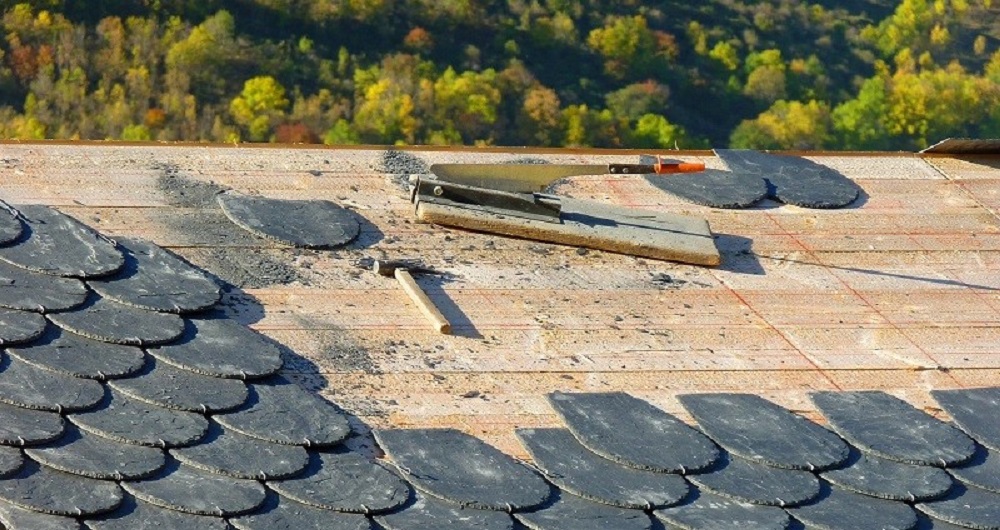The roof is undoubtedly the largest and most vital asset that you own. As it covers and protects your household from various elements, you must watch out for any signs of trouble. There can be a wide range of common problems that can plague your roof and undermine its protective ability.
From small leaks to major issues that demand immediate attention, most homeowners, unfortunately, have encountered roofing problems at some point. What is essential is to know how to identify the ailment and what to do next.
When it comes to inspections, it is good to stay ahead of the curve to avoid bigger damage.
If you are looking for ways to keep your roof in check, do not worry! We have compiled four common roof problems and how you can easily identify and fix them.
1. Roof Leaks
By far one of the most common roof problems is a pesky roof leak where there are as many reasons for it as the number of roofs in the world.
To correctly identify the source of a leak, you should begin by tracking the roof uphill from the origin of the stain. What will help is to watch out for possible roof penetrations such as chimneys, plumbing, roof vents, and dormers? Such penetrations are the most common cause of leaks as they tend to project through the roof.
Watch out for water stains and mold to identify the leak. Some may be difficult to locate as the water stain may develop further from the source.
In case the water stain is small, watch out for shiners! Shiners are nails that missed the framing member. Moisture that escapes into a cold attic condenses on the nails, and once the attic heats, the frost melts into the roof, causing a leak. You can fix this by simply clipping the loose nail using a side-cutting plier.
If you have identified a hole as the culprit, then a 12-by-12-inch piece of galvanized metal flashing is the remedy for you. Push away the damaged shingle and place the sheet to cover up the hole
If you are finding it challenging to identify the leak, wait for the dry season and run a water test on your roof.
2. Damaged Shingles
When it comes to shingles, while they offer excellent protection, there is plenty that can go wrong. Rough weather, animal activity, and even simple wearing away of the protective layer can make shingles break or go missing from the roof of your homes. This can cause the underlying wood to become prone to holes and rotting. Keeping your roof clean from fallen slow, and other types of debris can help identify damaged shingles.
If broken, you can replace them with new ones, or you can cut shingles into smaller sections to replace just a single tab.
How you will do this is by getting your hands dirty on the roof. Inserting a putty knife beneath the shingle will release it from the seal holding it down. A flat-bar will help lift the damaged shingle and remove any nails present. Now you must be careful while doing this to ensure that you do not end up damaging the shingle above the one needing repair.
Once the piece is removed, you can slip in the new part and secure it using 7/8-inch roofing nails. Once replaced, you should lift the tab to apply a layer of cement to seal the deal!
3. Roof Shrinkage
Cold weather causes the entire house to shrink, including the material of the roof. When roof material, specifically the membrane, shrinks, this leads to a variety of problems such as cracking, deterioration, and pulling of essential components such as flashing.
If your roof is covered with a synthetic rubber membrane called EPDM, there are higher chances of shrinkage affecting it. If the membrane is of a lower quality, it will not be as durable, and the protection it offers will be quite weak.
The best way to prevent shrinkage is to ensure that your roof has been installed correctly. If done right from scratch, this can prevent shrinkage from the get-go. If the repair is as intensive as a complete re-do of the entire roof, it is best to enlist the help of a qualified team of professionals. While you may be handy with your roofing knowledge, sometimes doing it yourself may lead to more damage. Here come in handy the knowledge and expertise of professional roofers. So, if you need to repair the material of your roof, consult a roofing company to come for a thorough investigation.
4. Damaged Flashing
Flashing is a durable material that is used to provide a watertight seal for seams in order to prevent water from seeping between one object and another. Ever noticed a shiny strip at the bottom of chimneys or skylights? That is right; those are flashings. While they are highly functional when in place, damaged flashings can be a source of distress to homeowners.
This is particularly troubling to homeowners in places that receive heavy rainfall. Damaged flashing can lead to moisture entering through the roof and causing further costly damage to the rest of the house.
Signs of damage can either be minor and difficult to spot, or they could be major problems requiring a great deal of repair. Some issues to keep a lookout for are rust or corrosion, small holes, missing pieces or bends and cracks in your roof material.
Make it a habit to keep flashing in check when you visit the roof. If you find loose bits, nail them down using screws made of the same material as the flashing. If you uncover any holes, then turn your immediate attention towards filling them right away using roof cement.
When it comes to roofing, it is always best to keep it thoroughly maintained to avoid costly damages. Do you have any tips and tricks up your sleeve when it comes to fixing roof problems? We would love to hear from you in the comment section below.






